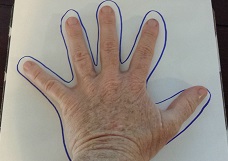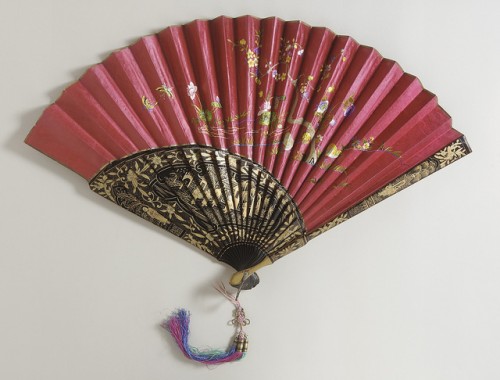Whether you are working with an in-person teacher to learn vibrato, or are trying to learn violin vibrato online, watch out for this common problem.
The problem: “Clustered Fingers”.
The solution: learning to maintain a little air space between all fingers.
Clustered fingers inhibit the freedom of motion needed for a nice, relaxed, round vibrato.
This problem stems from a combination of things:
- Lack of finger independence (prevalent in 3rd and 4th fingers especially)
- Finger weakness (the weak finger recruits a stronger finger)
- Lack of balance
- Tension in the hand, or what Jennifer Johnson calls “co-contraction”, where fingers are working at opposition to each other (Jennifer Johnson wrote What Every Violinist Needs to Know About the Body)
As you can see, there are many contributors. No wonder it is a common problem!
How to Improve Your Violin Vibrato
Here’s how I work on this issue with my in-person students while learning vibrato:
- First, go ahead and try to get a decent vibrato ALLOWING your fingers to cluster together. (only for a week or two)
- Then, try to allow only two fingers to cluster. (again, only for a week or two)
Here are the best pairs:When you vibrate 1, students often allow 2 to help by sitting on top of index fingernail; I would prefer you don’t use this, it is too hard to relax. Instead, try waving the other 3 fingers in the air as you vibrate 1st finger
when you vibrate 2, allow 1 to be planted on the fingerboard as well
when you vibrate 3, allow 2 to be planted on the fingerboard
when you vibrate 4, allow 3 to be planted on the fingerboard
So, the only time you allow a HIGHER finger to help is on index because there is no lower finger. The tendency is to place a higher finger on top of the lower finger to help. If you use the pairs in the way I have outlined above, this gets you well on your way to weening yourself of finger co-dependence. - Instead of placing hard objects as spacers between your fingers, use ear plugs. This is less intrusive, but still reminds us to strive for air space. Bonus: if you drop the ear plugs, that is a GREAT SIGN. So don’t deliberately try to hold them, try to drop them!
- Exercise your fingers using a stress ball, squeezing modeling clay, using my clothespin exercise, or doing vigorous activities like tennis, rock climbing, or you can buy special gadgets to exercise the fingers 360 degrees. Don’t overdo it…just enough to get little muscles stronger, and to recruit bigger muscles to support the smaller ones.
- As your vibrato improves, (WITH CLUSTERING) YOU MUST PRACTICE RELAXATION, or your work will yield nothing. Clustering tends to encourage tension and over-working. Vibrato ultimately should be as relaxing as a hand massage.
- Finally we must begin to insist on air space and total finger independence. Hopefully you have learned relaxation and have increased your finger strength.

Now, without your violin in hand, hold your left hand up, fingers outstretched, looking at the back of your knuckles, then twist the hand into violin position. Your fingers do not cluster, do they? The naturally fan out. And they do not fan out one-dimensionally, as if you had your hand on paper and were going to trace your hand and make it into a turkey. Your hand fans out LIKE A FAN…pinky toward you, index away from you.
Clustered fingers is the most common mistake in motion people make when learning vibrato. Our hands don’t work like the paper turkey. Instead, the fingers spread out just like a beautiful Japanese fan. All the way from our WRIST BONES, through our palm, and to the tips of our fingers. Explore this motion. Amplify it. This motion combined with finger strength and relaxation will give you the relaxed air space you need.
Click here for my excellent course on learning vibrato. Or, if you’re studying Suzuki Book 2, click here to learn about my Suzuki violin book 2 course, which includes vibrato instruction.

